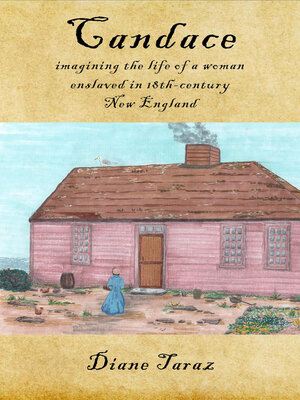
Sign up to save your library
With an OverDrive account, you can save your favorite libraries for at-a-glance information about availability. Find out more about OverDrive accounts.
Find this title in Libby, the library reading app by OverDrive.



Search for a digital library with this title
Title found at these libraries:
| Loading... |
For decades Diane Taraz and her husband have attended week-long conferences on Star Island, off the coast of New Hampshire. She has always been interested in the history of the Isles of Shoals, of which Star is a part. Before the conference era that began in the 1900s, before the golden age of seaside resorts in the 1800s, Star Island was home to a village called Gosport, founded long before the American Revolution.
The town and church records in the Star Island library let Taraz peek into the lives of the colonial residents. When she found entries showing that people were enslaved on Star, including a woman named Candace brought there as a child, she began to ponder what this woman's life might have been like.
Most of this book is about the world in which Candace found herself nearly 300 years ago. It is based on a wealth of research, nearly all from primary source documents. The scenes that imagine her experiences are conjecture, and Taraz recognizes that she has no way of knowing anything about this woman's inner life. But Candace can be placed in the midst of an ocean of facts, and it is worthwhile to envision her as a live person rather than just a fading bit of ink on a page.
This book is filled with everyday details about life in the eighteenth century, many from Taraz's extensive library of works about that time. The book "Black Portsmouth" was a treasure trove of knowledge about the continuous presence in New Hampshire of people like Candace, a rich history long ignored, belittled, and erased. But the real treasure was digitized archives containing wills and court records, and foremost the Gosport town and church records.
Taraz made many passes through these records, each time with a different focus. She noted the dates of each annual meeting, which took place in March. Figuring out why they chose that month led to the history of off-kilter calendars that have plagued civilizations for millennia, along with a most unusual event that Candace experienced in 1752 when 11 days were left out of the month of September. Deciphering records that mention currency led to exploring how the colonies handled money, which was not very well. Noting when various names appeared and what those people were doing added another layer. The town had numerous concerns, from wayward livestock to maintaining the meeting house, a task done by a Black man named Charles, whose pay was noted in the minutes of two annual meetings.
The parsonage was moved to the mainland after the Revolution and a photograph of it shows us the building in which Candace spent her life. Tucke's estate inventory reveals what was in the parsonage – the tools Candace used every day, the furniture that surrounded her.
Taraz notes the interactions between the three populations that were mingling in New England — Indigenous people, white colonists, and Black residents, both enslaved and free. She explores how they grappled with the basic organization of their lives, including how they measured days, years, and quantities; what they ate; what they wore; how they handled birth and death; what they taught their children; and how they ran their households and communities.
Taraz has drawn on her own experiences in bringing Candace's world to life, from breastfeeding to hand-sewing to many weeks living on the Isles of Shoals. Books and plays from the eighteenth century give her the cadence of the Shoalers' speech. The lyrics of hundreds of folk songs rattle around in her head, steeping her in antique language and letting her glimpse the hearts and minds of people who lived long ago.
I hope we all can benefit from knowing more about the origins of our society...






